December, 1931
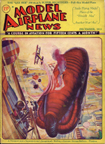
"Balloon Busting"
Model Airplane News Cover Art for December, 1931
by Jo Kotula
Click to Enlarge
The covers during the early 1930s are careful to point out that any aerial action took place during "wartime", something that was [then] thought to be long pase because we had fought and won the "War to End Wars" and that all the combatants were jolly good friends.
The subject of this issue is the destruction of a German observation balloon by a Sopwith Camel and a Nieuport Model 28. This is one of the very few occasions in which a lighter-than-air craft made an appearance on the cover of Model Airlane News. (If you are interested, scroll to the end for the others...). By the amount of area covered, the "Sausage Balloon" seems to be the principal subject. This is all well and good because the airplanes have been given their own covers, as shown below. We have provided some links just in case you are more interested in the airplanes than the balloon.
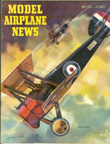
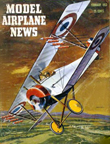
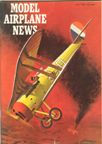
Treatment of the Airplanes
It's nice that you don't have to wait 20-30 years for these covers to be published...
Middle: Nieuport Model 28 armed with LePrieur Rockets for Balloon Busting(see below)
Left: Sopwith Camel Right: Nieuport Model 28
Click to Enlarge
Now about that balloon. From the point of view of the 21st century, this must look like an exercise in nonsense -- why would the Germans send up such a monstrosity and why would the allies want to attack it -- and since it was filled with hydrogen, what was so noteworthy about shooting it down?
Observation balloons were commonly adopted by all sides and considered ideal in the static trench warfare conditions largely peculiar to the First World War. However they were deployed extensively along the Western Front in particular. Winched into the air, seldom alone, they were usually accompanied by one or two others for comparative observation purposes, particularly in setting up the coordinates for artillery fire. Observation readings were passed down via the use of flags or occasionally by radio, and balloon operators would generally remain in the air for hours at a spell.This was regarded as a dangerous job, for although observation balloons were invariably heavily protected by anti-aircraft and machine gun fire and by wire meshes dangled between groups of balloons, they were often the irresistible stationary target of enemy aircraft. British servicemen were permitted to don parachutes to escape should the balloon come under successful enemy fire, although the chances of a safe escape once the balloon was ablaze was slim. German ballonists were not given parachutes.
Bringing down an observation balloon was regarded as a valid victory and were added to each pilot's list of 'kills' in the same manner as enemy aircraft. This was because downing balloons was considered something of a hazardous occupation, although some pilots developed a specialization as 'balloon busters' (such as the Belgian Willy Coppens, who brought down 35 balloons, the highest single total of the war). Here is a whole website devoted to "Balloon Aces."
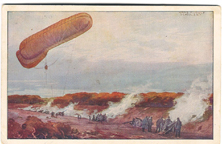
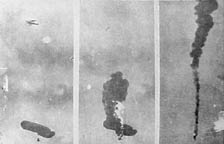
Photos of the Balloon Busting
Click to Enlarge
Bringing down balloons was deceptively problematic. When under attack operators on the ground would hastily winch down the balloon. Many pilots were careful not to pursue balloons beneath 1,000 feet for fear of the devastating consequences of anti-aircraft fire. Although balloons were occasionally shot down by small-arms fire, generally it was surprisingly difficult to achieve due to the distances and altitude involved. Ordinary rifle and machine gun bullets would pass relatively harmlessly through the hydrogen gas bag. Although the wicker car was a small target, killing the observer would put the unit out of action for a time. The Germans seem to have had a lot more observers than balloons, so it was necessary to eliminate the baloon for best results. Many air attacks succeded by dropping incendiary devices on top of the balloon, as illustrated above.
In early 1916, a Frenchman Lt. Yves Le Prieur had some success using "solid-fuel stick-guided rockets" (more like ordinary 4th of July skyrockets...) was first used in April 1916. Four rockets were attached to each outboard strut of a biplane aircraft and fired through steel tubes using an electrical trigger. Although this might be considered a brilliant vision of aviation's future, the LePrieur rockets were quite far from "guided" missiles. [The February, 1953 issue treats the LePrieur Rockets.] It was not until special 'Pomeroy' incendiary bullets and 'Buckingham' , a flat-nosed .45 calibre explosive bullet, became available on the Western Front in 1917 that any degree of consistent success was achieved.Here is a video of the Balloon Busting in action:
Click Here for more information about Observation Balloons.

Click to go back and select another cover.
Counter for the Entire Site (not just this page..)
Home | About Lindy | Last Week's Reviews | Upcoming Events | 1940s Collecibles
The Guide - Establishments - Travel - Accessories
Music | Links | Photo Gallery | Extras | Contact